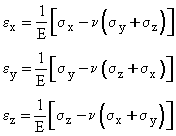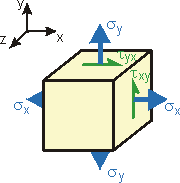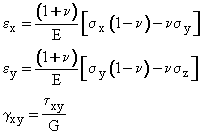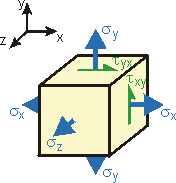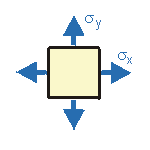Stresses actually vary from point-to-point in a component. A material point can be thought of as an infinitesimal cube aligned in an orthogonal coordinate system (e.g., x-y-z). Each face of the cube has three stresses acting on it:
- a normal (axial) stress perpendicular to the face,
- two shear stresses parallel to the face in the other two coordinate directions.
Applying equilibrium, it can be shown that there are only 6 unique stresses needed to describe a state of stress:
(sx ; sy ; sz ; tyz = tzy ; tzx = txz ; txy = tyx )
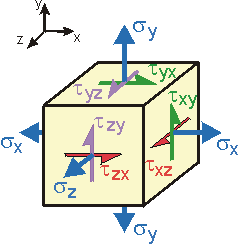
3-dimensional stresses drawn in their positive senses.
- Stress subscripts refer to (1) the face on which they act, and (2) the direction in which they act. Thus, txy is a shear stress on the x-face acting in the y-direction.
- Stresses are positive if they physically act on a positive face in a positive direction or act on a negative face in a negative direction (as drawn above).
- Stresses are negative if they physically act on a positive face in a negative direction or act on a negative face in a positive direction (e.g., a negative sign indicates the stress acts opposite drawn above).
